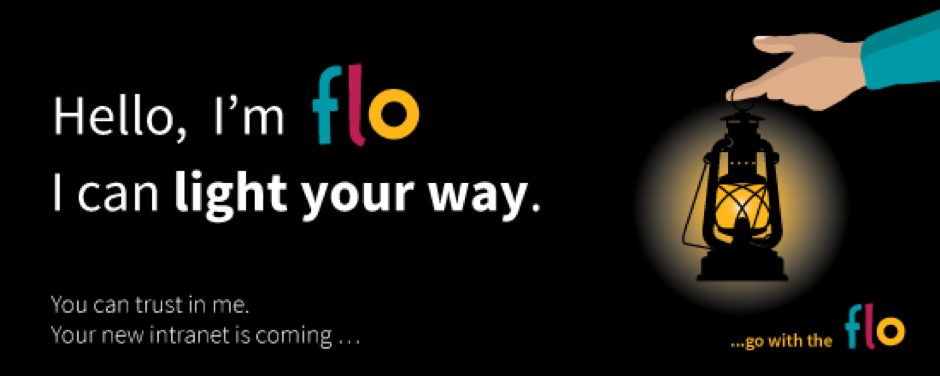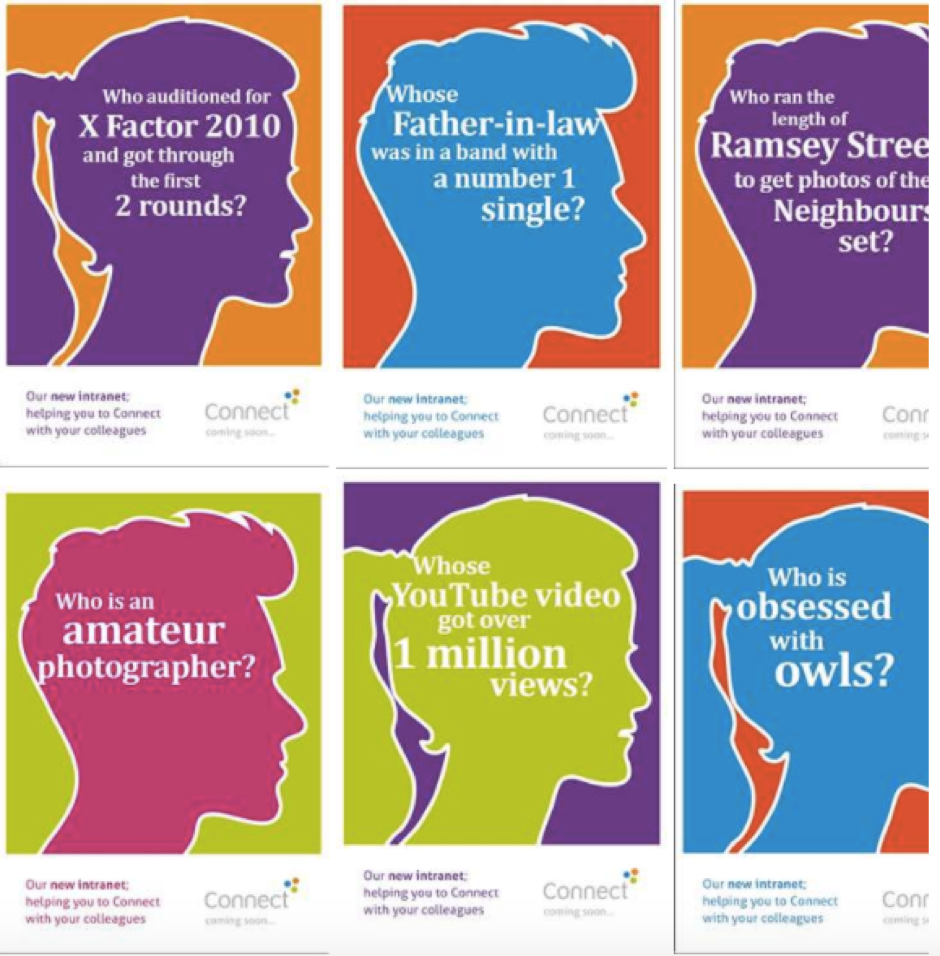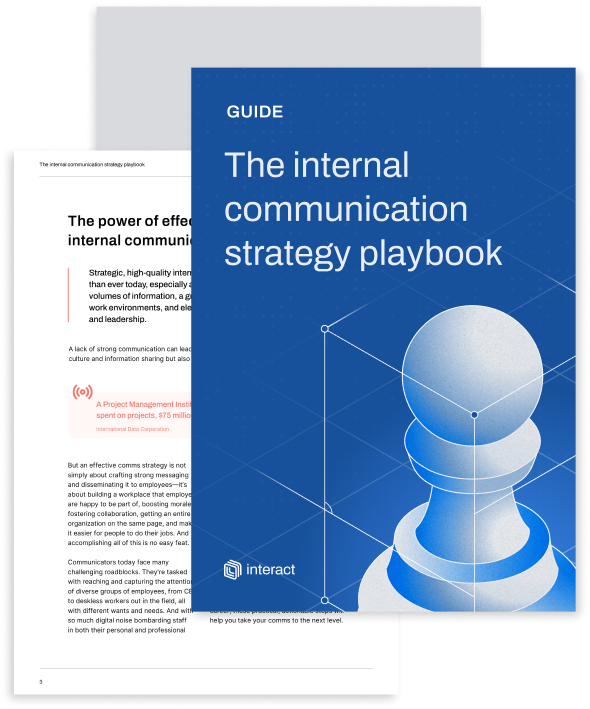In a world where we are all exposed to thousands of messages each day, you need to ensure that your critical internal communications get through to employees. The article discusses eight innovative internal comms ideas that will make employees sit up and take notice.
Digital marketing analysts estimate that the average American is exposed to a jaw-dropping 4,000 – 10,000 advertisements daily.
Even in the age of ad-free subscriptions to Netflix and Spotify, we are often bombarded without even realizing it. Social media, digital signage, and podcast ads all subtly add different levels of advertising to our digital worlds.
If you’re in charge of getting people to hear, see, and remember your particular message amidst all this noise, you have a tough job. And that can be double difficult for internal communications and intranet content.
FREE EBOOK – 14 steps to great internal communications
How can you make an impact when budgets are tight and the audience is at times less engaged than you might hope?
We’ve looked at a selection of viral marketing campaigns and powerful internal initiatives to compile eight innovative internal comms ideas that will make your employees sit up and take notice.
1. The mystery/tension builder
We know that transparency is essential for effective internal communication and workplace engagement. Research shows that 80% of employees want a better understanding of how decisions are made and 87% of people who are looking for a new role say they actively value transparency.
However, introducing a hint of mystery and suspense during internal comms campaigns can be a powerful way to get people talking about your latest initiative.
Apple is famous for deploying this tactic, choosing to cloak its product launches and announcements in dramatic secrecy that creates media frenzies and second-guessing for months ahead of the big day. The hype they create is undeniably effective. When Apple announces a press conference date, the world knows about it.

While this approach is most commonly seen in external marketing, introducing a “hint marketing” or teaser campaign into your internal communications plan can prove highly engaging for employee buy-in.
If you have a positive forthcoming event, such as a new product launch, office opening, or workplace initiative, consider trying to build tension and speculation before you make the big announcement. “Coming soon” hint communications are effective; better still, add a hint of mystery by utilizing something ambiguous or difficult to decipher, such as a logo, image, icon, or object.
Placing hints across multiple communication platforms over an extended period will pique interest and get employees guessing and anticipating. When you make the big announcement, you’ll have more interest than you would when simply sending an email on the day
2. Piggyback marketing
Although it can be controversial (and even illegal) when it appears as so-called “ambush marketing,” using inspiration to piggyback on successful new campaigns, trends, news, or concepts can capture employees’ attention.
A recent high-profile example was the various marketing campaigns that companies launched at the same time as the one for the Barbie movie in 2023. Burger King in Brazil, for example, advertised a new burger with a pink sauce, all of which was placed on a pink background. The online retailer Not On The High Street even ran a “totally coincidental pink Friday sale” on the same day the movie was released.
It doesn’t necessarily have to be someone else’s ad campaign either. Newsjacking is common in the marketing field and can prove highly effective internally. If you’ve got something to say, why not use a topic everyone is already talking about to get your message heard? Lego, for example, recreated its own Oscars photo using Lego-figure celebrities.

Next time you have a dry subject to promote and you’re struggling for inspiration, consider borrowing someone else’s ideas to get your message noticed.
FREE EBOOK – 14 steps to great internal communications
3. The People’s campaign
Though you may not realize it or utilize it fully, you have a powerful internal comms resource at your fingertips: people.
One of the greatest marketing trends in recent years has been the shift of power from organizations to consumers. Review sites, word-of-mouth marketing, and user-generated content are highly valued and trusted by consumers, with a report published by Nielsen Global identifying that 83% of respondents across 60 countries agreed that they trust the recommendations of friends and family. Consumer opinions posted online were not far behind this, with an approval score of 66%.
Give your internal comms campaign more chance of gaining grassroots support by enlisting employee ideas during the creation process. Getting ideas and input from employees can be an uphill struggle in some instances, but if you create the right motivation and culture the results pay for themselves.
For example, if you have a new product line or initiative launching, consider offering selected employees a “sneak preview” or giving them the product in question for free as an incentive. Then, ask them to create reviews, be employee advocates on their social media networks, or support your internal comms.
If employees are used to only seeing centralized information from management or the internal communications team, a more informal blog or review from co-workers will make a refreshing change.
4. Tell the story
Storytelling has dominated the communications and marketing arena for the last few years, and with good reason. We’re wired for stories. We absorb information better when there’s a context around it or a human element we can identify with. Stories are powerful.
It’s a psychological connection that many organizations have successfully deployed in their marketing campaigns. Nike is famous for its ability to leverage this approach. Storytelling formed the foundation of its Nike: Unlimited video series, all of which featured an individual story aligned with a value, such as “Unlimited Courage,” “Unlimited Will,” or “Unlimited Pursuit”.
Introducing a human aspect to your internal communications efforts brings the message to life. A simple example of this is recognition communications. If your organization has recently won an award, or an account, or is celebrating an accomplishment, shift the focus from the achievement to the people behind it.
Who was the champion in getting the successful project off the ground? Consider an interview-style blog or video rather than a formal press release or internal email. Get the individual(s) to talk about the highs and lows, the challenges, and how they overcame them. This introduces personality and real-life situations.
Alternatively, consider contacting your customers for their stories. When your product or service has an impact on a business or individual, telling their story and experience brings your company mission to life for employees: increasing engagement, motivation, and innovation.
FREE EBOOK – 14 steps to great internal communications
5. Capture the reactions
There is a trend in modern entertainment for watching other people – particularly “ordinary” people – and enjoying their reactions or interactions on-screen.
Capturing this fascination and using it for marketing purposes has increased, with some of the most successful viral campaigns focusing on surprising, shocking, or scaring everyday people and filming the subsequent reactions.
Disney pulled this off with a public stunt that introduced its widely loved and recognizable characters into a shopping mall and then filmed the reactions of passers-by. That video has clocked up 22 million views and counting.
For something a bit more full-on, you can’t help but marvel at the efforts of TNT in this “Push to Add Drama” campaign that took place in Belgium. The coordination of the choreographed actors produces some astounded reactions from onlookers.
Admittedly, IC teams rarely have the resources to pull off a full-scale flash mob campaign. However, a scaled-down version for internal comms purposes is surprisingly achievable.
If you have a new office opening or a regional event, why not consider capturing reactions from employees and broadcasting that via your intranet software ? This gives global teams who may not have the ability to attend events in person the chance to feel part of an occasion and enjoy the authentic reactions of co-workers.
Alternatively, fly-on-the-wall footage of employees or customers interacting with new products or receiving awards can (with their permission) be a powerful way to engage people in a way that goes beyond standard email updates.
6. The scavenger hunt
Who doesn’t love a scavenger hunt?
Introducing gamification and competition to internal comms activities can generate excitement and engagement, so it’s worth considering how to include digital or physical clues to hype up workplace initiatives.
Thanks to the reach of social media, many companies have successfully pulled this off on a global scale; examples include Nike’s Kobe 11 scavenger hunt, which saw 20 pairs of sneakers autographed by the NBA star Kobe Bryant hidden in 20 cities worldwide. Spearheaded through the sports giant’s basketball Twitter account, a variety of clues had fans scouring different cities to land themselves the prized shoes.
Bringing this concept into the internal comms environment is a simple yet effective ploy to tie into a big launch event, for example, or as a team-building exercise to get staff working together to solve clues and seek out treasure.
If hiding prizes in physical locations isn’t possible, consider a virtual version. Use your company intranet to set questions and give clues to information “hidden” within blogs, content areas, or profiles on the intranet. The first person to find all the pieces of information and solve the riddle gets a prize. This is a fantastic way to get people to log in and enjoy your creative internal comms ideas.
FREE EBOOK – 14 steps to great internal communications
7. The “plain speech” campaign
Corporate jargon, management speak, commercialese: whatever you want to call it, we’re all guilty of it at some point.
When you’re tasked with developing communications that are professional yet neutral, and that appeal to a diverse demographic of employees, it’s perhaps easiest to err on the side of professional over personal.
While that’s the right approach for many messages, employees also value and relate to honest, authentic communications. What’s more, when we are continually exposed to a corporate voice, we may become desensitized to it and stop engaging with it.
So, for your next campaign that allows a different approach, why not consider taking a different tone and a different voice.
Ometria describes some familiar brands that have mastered this concept in their external marketing, including fashion brand, Ayr, who inject personality into the way they talk to customers across all their channels. The feel is informal, fun, and approachable: aligned to its brand and beliefs with a colloquial spin.
Introducing your website’s homepage with the bold statement “Nice to meet you :)” might be considered a gamble, but for a plain-speaking brand, it’s a good way to break down consumer perceptions.
If you have a comms initiative that could use a little more fun, shake things up and drop the corporate speak. You can even go as far as creating a specific internal persona; something Kent Community Health NHS Foundation Trust deployed as the “voice” of its intranet, Flo. The more friendly, approachable voice helped engage users and break down the corporate speak barrier.

8. Use your data
We live in an age of Big Data. As consumers, information is constantly being collected about our day-to-day habits and choices, interactions, and patterns of behavior.
Within businesses, these numbers are put to work in generating customer insights, driving workplace innovation or product improvements, improving customer service, and identifying potential market trends.
Spotify now does this every year as part of its annual “Wrapped” campaign, using customer data to create bespoke playlists and shareable social media collaterals.
But what about our internal data?
If you have intranet software or business applications with analytics, there may be clever ways to use that data to your advantage for unique and engaging internal communications campaigns.
We loved this example by MHS Homes, which utilized data from its Intranet People Directory to create teaser posters about members of staff and run a competition for employees to solve the silhouettes by searching on the intranet.
The campaign helped users to become familiar with a new intranet platform and carried the caveat that those entering the competition also had to fill in their own profiles—thus increasing engagement with the new intranet, which saw the organization reach 85% active users from across its employee pool.

Getting creative with internal comms ideas
Business communications don’t need to be boring.
Thanks to the huge range of internal communications tools and inspiration available, we are empowered to create engaging campaigns that will get messages seen and understood.
If you have something worth saying and sharing, make sure it is heard; don’t be afraid to challenge the status quo by injecting some life into your communications.


